Want to keep your customers coming back? Consistent email newsletters are one of the most effective tools for building long-term relationships with your audience. It’s not just about selling products or promoting your services—email newsletters allow you to provide ongoing value, nurture trust, and keep your brand top of mind for your customers.
Table of Contents
Many businesses struggle with staying connected to their audience over time, which leads to missed opportunities for nurturing customer loyalty. In this post, we’ll show you how to use email newsletters to keep your audience engaged, build trust, and foster relationships that turn one-time buyers into lifelong customers.
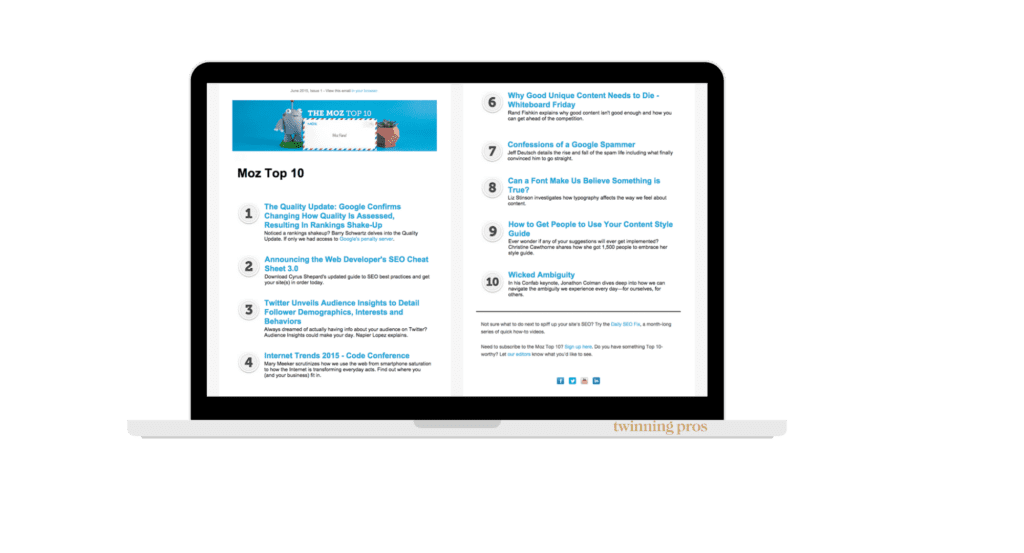
Why Email Newsletters Are Crucial for Building Customer Relationships
Email newsletters are much more than just another promotional tool. They’re a direct line of communication that allows you to regularly connect with your audience, deliver valuable content, and show customers that you care about their needs. Here’s why they’re essential for building long-term relationships:
- Stay Top of Mind: Consistently appearing in your customer’s inbox keeps your brand front and center, making them more likely to think of you when they need your products or services.
- Build Trust and Authority: Regularly sharing valuable insights, tips, and helpful information positions your brand as an expert in your field, building trust with your audience.
- Personalize and Nurture: Personalized email content shows your customers that you understand their preferences and interests, deepening the connection and fostering loyalty.
By the end of this post, you’ll know how to use email newsletters to create long-term, meaningful relationships with your customers that drive repeat business.
The Benefits of Using Email Newsletters for Relationship Building
Stay Top of Mind with Consistent Communication
When customers see your emails regularly, your brand stays fresh in their minds. Whether it’s a helpful tip or a special offer, staying in touch ensures they think of you first when they need something you offer.
Why it works: Consistent communication reminds your audience that you’re there for them, making it easier for them to turn to you when the time comes to make a purchase.
Example: Send a monthly newsletter with product tips, exclusive offers, or industry news to keep your audience engaged and thinking of your brand.
Build Trust and Authority
By providing helpful, relevant content through your newsletters, you establish yourself as a trusted authority in your industry. Customers appreciate brands that provide value beyond just selling products.
Why it works: Sharing educational or insightful content shows your customers that you’re focused on helping them, not just making a sale. This builds long-term trust.
Example: Create how-to guides or expert advice newsletters that solve common problems your customers face, positioning your brand as a valuable resource.
For more insights on creating engaging content, visit The Ultimate Guide to Writing Engaging Email Newsletters.
Personalize and Nurture Customer Relationships
Email newsletters allow you to deliver personalized content tailored to your customers’ preferences, making them feel valued and understood. The more relevant your emails, the more likely your audience is to engage with your brand.
Why it works: Personalizing your emails based on customer data (such as purchase history or browsing behavior) shows your customers that you care about their specific needs.
Example: Use email segmentation to send targeted offers based on what customers have purchased in the past, or share content that aligns with their interests.
Learn more about email automation and personalization in How Automation Can Help You Scale Your Business Without Losing Control.
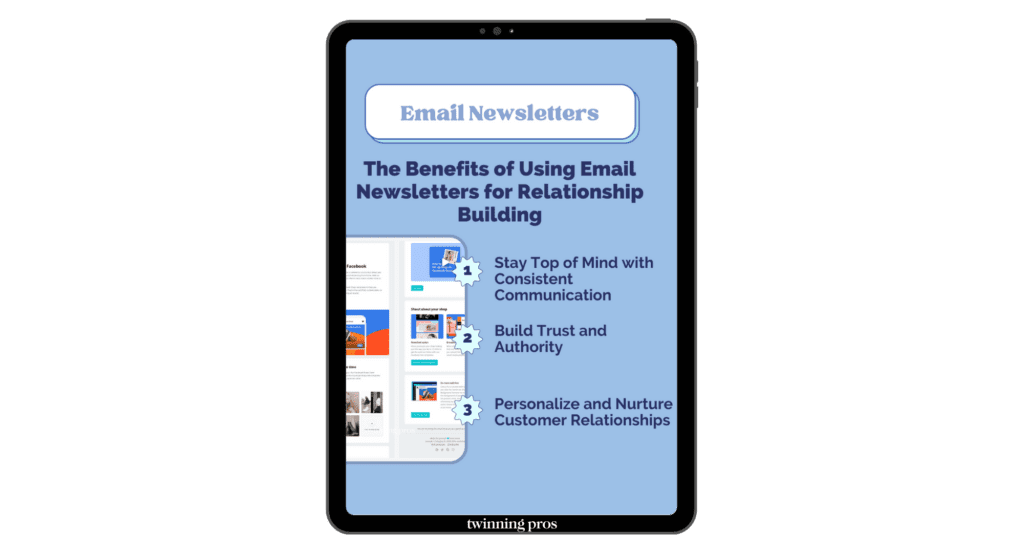
Key Elements of a High-Impact Email Newsletter
Attention-Grabbing Subject Lines
Your subject line is the first thing your audience sees, so it needs to grab their attention. A compelling subject line will encourage your subscribers to open the email and engage with the content inside.
Why it works: A strong subject line increases open rates and ensures that your valuable content is seen by your audience.
How to implement: Use curiosity, personalization, or urgency to make your subject lines irresistible. Experiment with different approaches to see what resonates best with your audience.
Example: “Exclusive Offer: Get 20% Off Today Only” or “5 Simple Tips to Boost Your Productivity Now.”
Valuable and Relevant Content
Your newsletter content should provide value to your audience. Whether you’re offering expert advice, industry insights, or product recommendations, make sure your content is relevant and useful to your readers.
Why it works: When your audience finds your emails helpful, they’ll continue opening them and engaging with your brand over time.
How to implement: Focus on content that addresses your audience’s pain points or provides solutions they need. Keep the content concise, actionable, and easy to digest.
Example: Share a monthly newsletter that includes a mix of product highlights, industry tips, and how-to guides.
Clear Calls to Action (CTAs)
Every newsletter should have a clear call to action (CTA) that directs your audience on what to do next. Whether it’s making a purchase, reading a blog post, or downloading a free resource, your CTA should be easy to find and action-oriented.
Why it works: A strong CTA encourages your audience to take action, leading to higher engagement and conversions.
How to implement: Use direct, actionable language in your CTAs, and make sure they stand out visually within the email.
Example: “Shop Now,” “Download Your Free Guide,” or “Read More” at the end of a newsletter section.
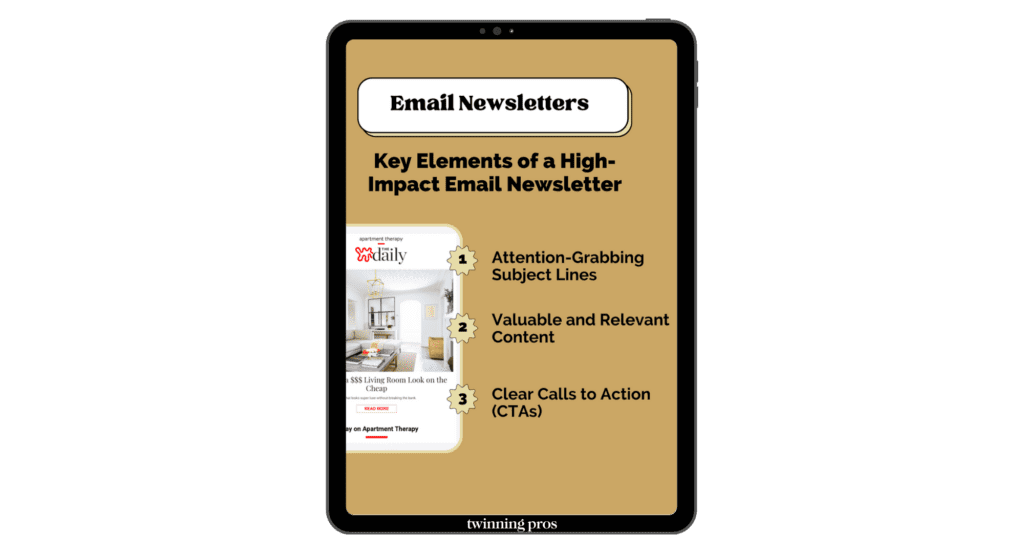
Best Practices for Maintaining Long-Term Relationships Through Email
Segment Your Email List for Personalization
Not all customers are the same, so why send the same emails to everyone? Segmenting your email list allows you to send more relevant, personalized content to different groups based on their preferences, behaviors, or demographics.
Why it works: Segmented emails have higher open and engagement rates because they’re more tailored to the recipient’s needs.
How to implement: Create different email segments based on factors like purchase history, geographic location, or interests, and craft personalized content for each group.
Example: Send first-time buyers an email with a beginner’s guide, while sending repeat customers exclusive offers or loyalty rewards.
Provide Consistent Value Over Time
Don’t just send emails when you have a sale or promotion—provide valuable content in every email to keep your audience engaged. Whether it’s educational content, tips, or insider information, ensure that each email adds value to the reader.
Why it works: Customers are more likely to remain subscribed and engaged if they consistently receive helpful content that improves their lives or solves their problems.
How to implement: Alternate between promotional emails and value-driven content like tips, tutorials, or industry news.
Example: Send a monthly email with product usage tips, along with occasional exclusive promotions to reward loyal customers.
For a time-saving approach to consistent email marketing, check out 5 Time-Saving Automation Tools Every Small Business Should Use.
Measure Performance and Optimize Your Strategy
To ensure your email newsletters are effective, regularly track metrics like open rates, click-through rates, and conversions. By analyzing what’s working and what’s not, you can adjust your strategy for better engagement.
Why it works: Measuring performance allows you to fine-tune your email marketing efforts, improving results over time.
How to implement: Use your email marketing platform’s analytics tools to track key metrics and run A/B tests on subject lines, content, or CTAs.
Example: Test different subject lines or email formats to see which generates higher open and click-through rates, then optimize future emails based on these insights.
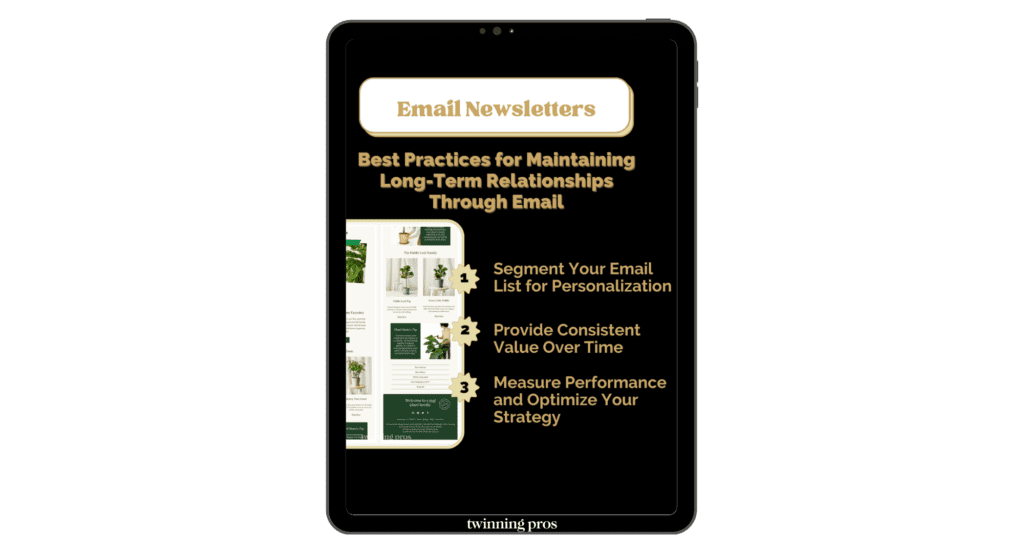
Conclusion: Build Long-Term Customer Relationships with Email Newsletters
Email newsletters are a powerful tool for building and nurturing long-term relationships with your customers. By consistently providing value, personalizing your communication, and delivering relevant content, you can keep your audience engaged and loyal to your brand.
Need help crafting engaging email content or optimizing your email campaigns? Get in touch with Twinning Pros to discover how we can help you design email newsletters that engage, delight, and build lasting connections with your audience.
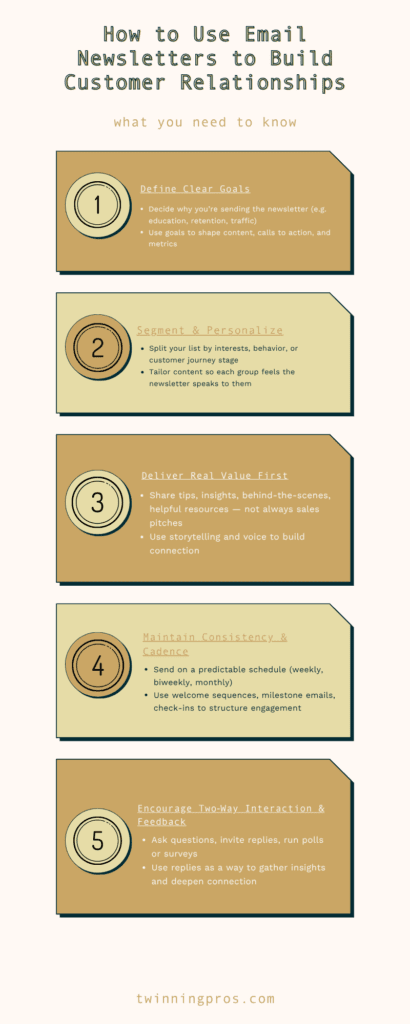
SEO for Beginners
Learn from the SEO Strategist who has 75+ first page Google rankings under her belt.
We’re marketing nerds and business strategists that have generated millions of dollars in client revenue. We're sharing the systems and strategies to help your growing business with marketing that actually converts.
We're Tiffany + Tabatha

Comments